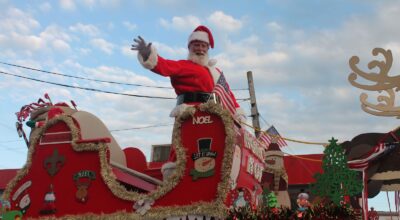Tips to Lounge & Landscape this summer
Published 12:08 am Saturday, July 4, 2015

- The dilemma of deciding between having your yard look nice and soaking up as much air conditioning as possible poses many conundrums to South Louisiana residents, but there are a few things you can do to reduce the amount of time spent outdoors allowing you to lounge and landscape.
LAPLACE — Generally, the highest-maintenance parts of a residential landscape are the flowerbeds, according to LSU AgCenter Horticulturist Dan Gill.
While gardens full of colorful annuals and perennials may look wonderful, Gill said the beds must be replanted as needed, weeded, watered, groomed and protected from insect and disease problems in order to stay looking healthy and beautiful.
“If you are trying to decrease the amount of maintenance your landscape requires, it’s a good idea to minimize the number and size of flower beds,” Gill wrote in an LSU AgCenter release. “In this regard, only plant flowers in the most important places, such as close to the front entrance to your home to brighten the front landscape, focus attention on the front door and welcome visitors.”
He suggests placing flowerbeds around outdoor living areas, where you and your family spend time outside.
Gill said instead of planting flowers in the ground, people can reduce maintenance by planting colorful bedding plants in large containers to flank the front entrance of the home or strategically place the containers on porches, decks and patios.
Lawns are another high-maintenance part of the landscape, Gill said, as almost every week from April through November require someone to drag out the lawn mower and mow the lawn, whether they want to or not.
“Sections of low-maintenance ground covers can reduce lawn work,” Gill said.
“Fall is a good time of year to plant reliable ground covers, such as liriope (Liriope muscari), Asian jasmine (Trachelospermum jasminoides), creeping lily turf (Liriope spicata) or monkey grass (Ophiopogon japonicus) as well as many others.”
Reducing lawn areas by enlarging decks or patio areas and creating or enlarging beds of lower-maintenance shrubs can also help, Gill said. Because fertilizer stimulates grass growth and increases mowing frequency, moderately fertilizing is recommended if you want to keep mowing maintenance to a minimum.
Make the right choices
If you’re looking for the most reliable and easiest-to-grow plants, choose those that have a long, proven track record of growing well in Louisiana.
“Evaluate the light conditions of the area before you select the plants that will be planted there,” Gill said. “The amount of light the area receives will largely determine what will grow well there. Put a plant in a location where it is not happy, and it will be nothing but disappointing despite your best efforts at care.”
To avoid mistakes in choosing plants, Gill said one must make at least some effort to learn about the plants they want to use.
“You don’t have to go back to school for this or spend hours studying gardening books,” he said. “Ask questions of the staff at the nursery before you purchase a plant and check with local LSU AgCenter agents for recommendations.”
St. John the Baptist Parish’s LSU AgCenter location is at 151 East 3rd St. in Edgard and can be reached at 985-497-3261. Information on what to plant and when can be found on lsuagcenter.com.
Do what’s important
Gill said one of the most labor-saving things people can do in their landscapes is use mulches.
“Mulching is important when creating an attractive landscape and healthy plants, and it’s especially critical in reducing weeds,” he said. “A 2-to-3-inch layer of mulch should be placed over the soil in every bed in your landscape. It’s well worth the cost and effort.”
Gill said mulch is your yard’s best defense against weeds and conserves soil moisture by slowing evaporation from the soil surface.
“Weeding and watering are major gardening jobs, and the more we reduce the effort needed to do them, the better,” he said. “Mulches definitely help with this. And don’t forget to replenish mulch as it decomposes in existing beds.”






